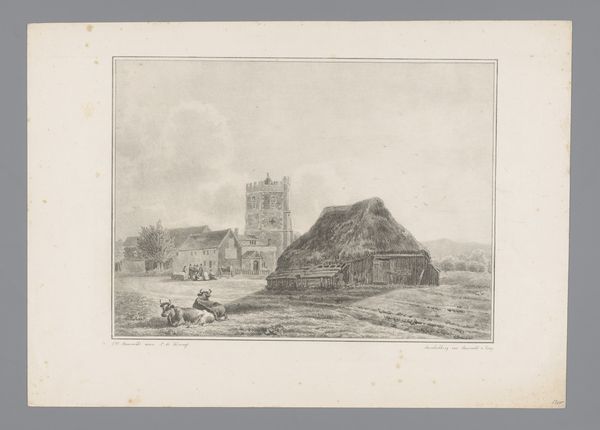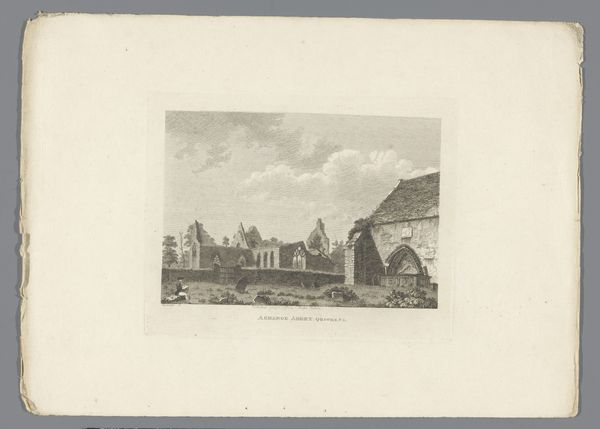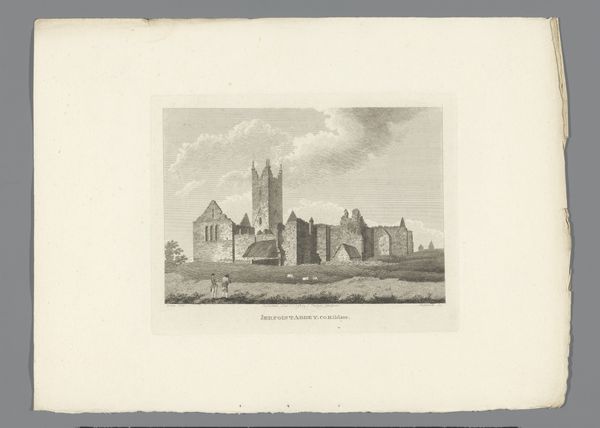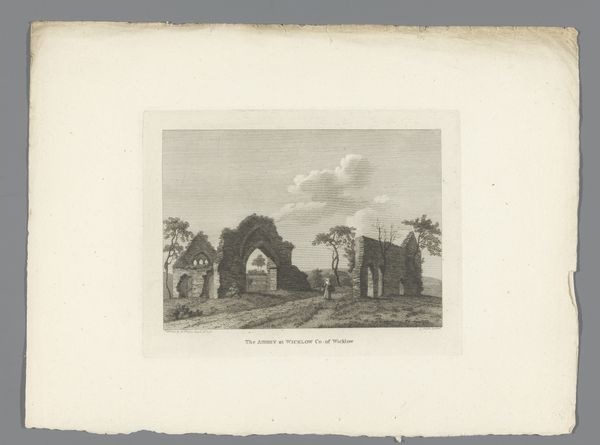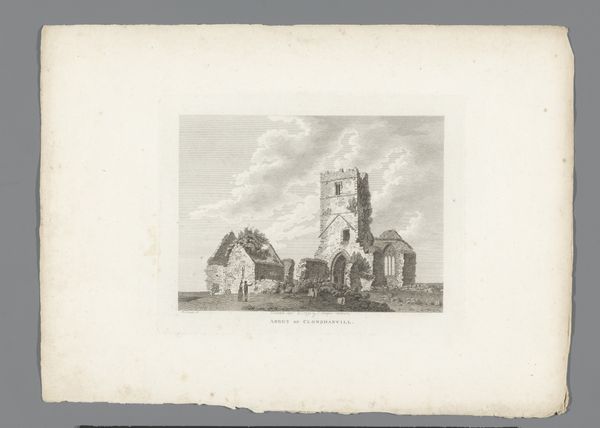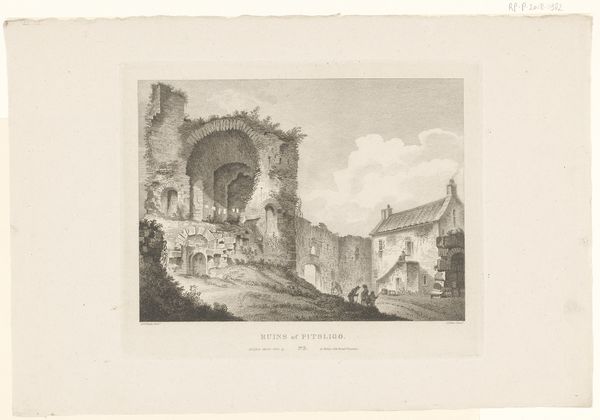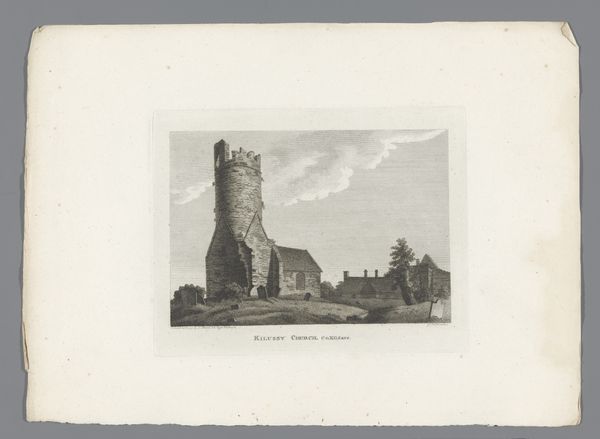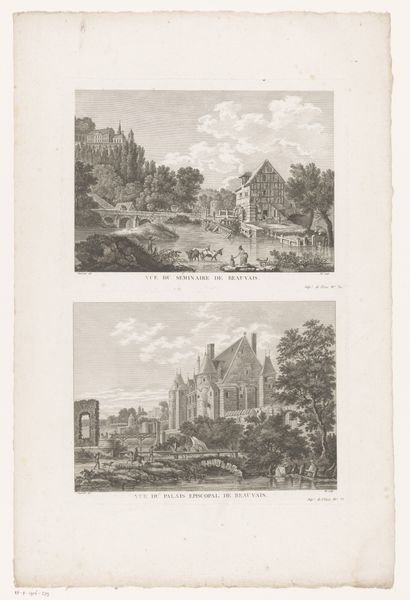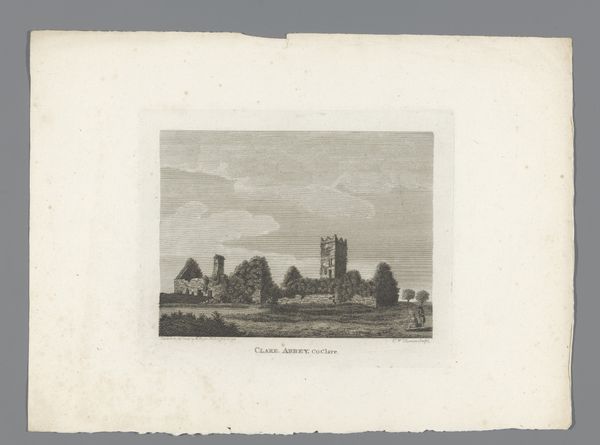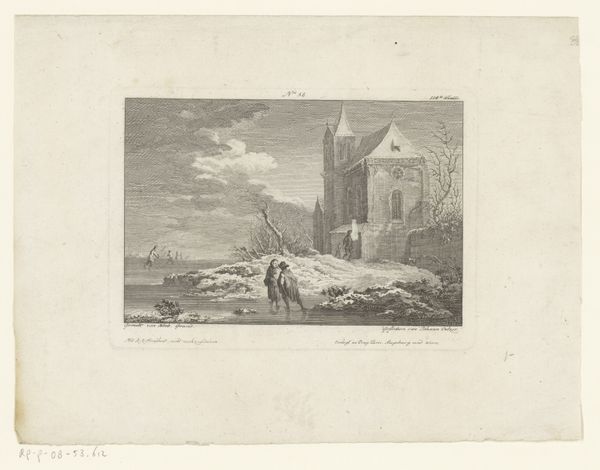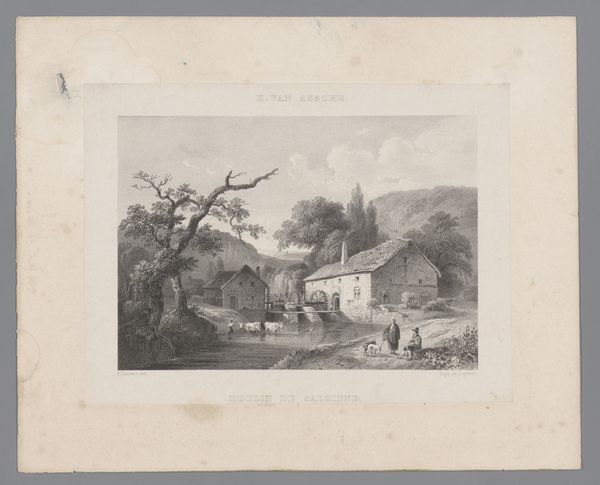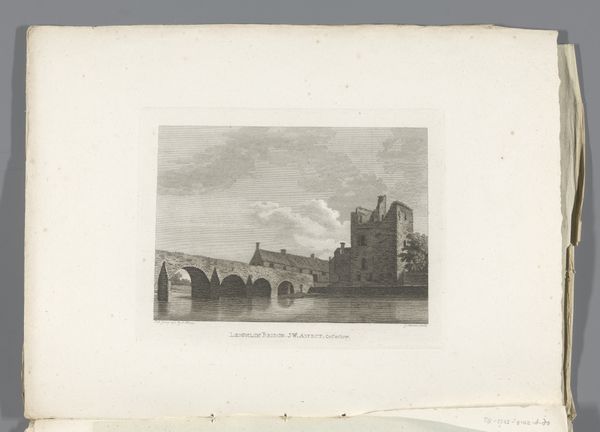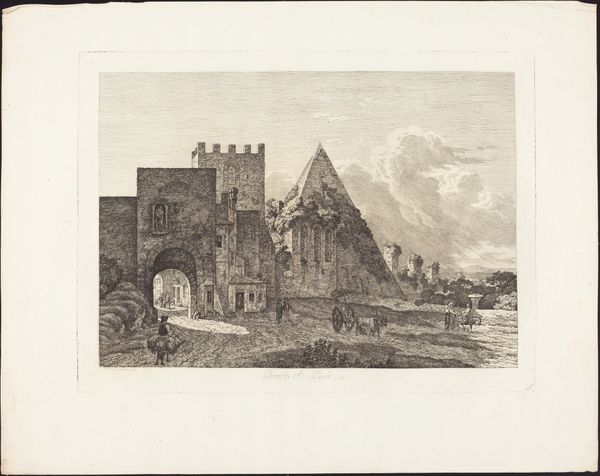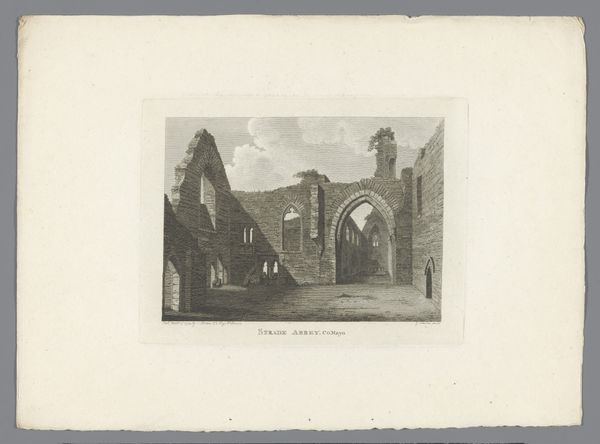
drawing, paper, ink
#
drawing
#
landscape
#
paper
#
ink
#
watercolor
#
realism
Dimensions: height 150 mm, width 199 mm
Copyright: Rijks Museum: Open Domain
Curator: This is an ink drawing, with watercolor wash, of the “View of Duleek Abbey,” believed to be from around 1791, now residing in the Rijksmuseum collection. It offers a rather poignant depiction of the abbey's ruins. Editor: There's a palpable sense of abandonment, isn't there? The grayscale gives the structure a forlorn feeling, standing stark against the landscape. I can almost feel the chill of the Irish weather. Curator: It's interesting to consider this scene in the context of the late 18th century. Duleek Abbey has witnessed a tumultuous history, influenced by waves of political change and religious upheaval, significantly impacting the landscape and community. It also invites discourse around identity as related to the diaspora created by many factors within and out of the society that occupies it. Editor: Absolutely. The ruins speak volumes about shifts in power. Looking at the stone construction, you wonder about the labor and resources required. Notice how carefully rendered each block appears and how the drawing implies human hands once painstakingly set them into place, for an empire’s spiritual mission. It reflects on the relationship between creation, destruction, and material legacy, now under constant siege from weather and perhaps vandals. Curator: The decaying architecture acts as a potent symbol of fragility. How it invites reflections of gendered or minoritized subjections, lost identities or unwritten, unheard narratives that could arise through deconstruction and historical reimagining is key. Consider also the two figures placed in the right-hand bottom corner; perhaps there's some narrative there, a class or race related commentary implied through their relationship to the landscape or implied class dynamics in such social constructions. Editor: True. Their presence is ambiguous. We can read their figures and poses only through the way light and shading gives them presence. The ink hatching gives volume and suggests both the structure of clothing, perhaps linen, as well as social standing—simple robes, a traveler's pack, all those speak to an era when dress indicated labor and location in ways very foreign to our lives today. Curator: So many stories whisper from the stones, each line a testament to history. It leaves one pondering the enduring human experience of resilience. Editor: Indeed. What persists, and what crumbles, leaves much to explore. Thanks for the insights.
Comments
No comments
Be the first to comment and join the conversation on the ultimate creative platform.
